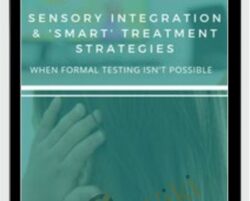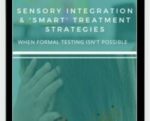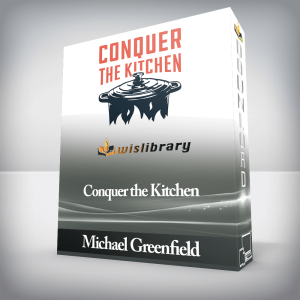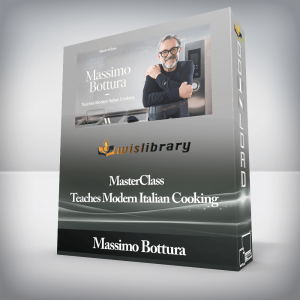How do you help a child grow when they’re too overwhelmed by their senses?From ADHD to Autism Spectrum Disorder, loud noises can become painful and too much stimulation can make it difficult to concentrate – yet your young clients are expected to fully participate in school, at home and in their community.Sometimes the “normal” treatments don’t fit the child in front of you and when every child’s needs are different, it can feel overwhelming or frustrating for you, too.But what if you could expose your young clients to sensory stimulation in a structured way that allow them to adapt, process and react to sensations effectively – a treatment modality that goes beyond the formal assessments?In this brand-new online course, Sensory Integration & ‘Smart’ Treatment Strategies: When Formal Testing Isn’t Possible, you’ll get this special training to evaluate when Sensory Integration (SI) is a good fit, and learn to create unique and challenging activities that help your client process these overwhelming situations through repetitive activities.Discover carefully designed, tailored physical activities that incorporate Sensory Integration (SI) – from balance to movement to structured exposure – that keep your client’s attention and how to you can accommodate treatment strategies to be done in therapy or at home. As one of the original researchers of the Praxis Test (SIPT) certification process, your expert instructor, Susan Young will walk you step-by-step through techniques that can fit your client’s exact needs, so you can create a sensory approach that fits multiple environments and helps your clients get back to fully participating in everyday activities.Plus, you’ll get a FREE BONUS session when you sign up that dives into how you can integrate common tech, like smartphones and tablets, into therapy!Sensory Integration:Assessing and Treating Kids When Formal Testing Isn’t PossibleSensory processing disorders can be debilitating for those who experience them.Overstimulation, trouble following directions or focusing attention can make it difficult to engage in day-to-day activities. Formal tests often require these things making it challenging for children with sensory deficits to meet the standards. This online course will expand your knowledge of sensory processing activities and enhance your effectiveness to work with these children!Learn how to identify which of your clients’ shortfalls have a sensory integration foundation and what treatment techniques to use to improve their quality of life.This workshop will step you through the key components of Sensory Integration (SI) and how you can apply it to your treatment approach with the children you work with in your practice.Understanding Sensory Integration & Your ClientDiscover the neurological foundations of SI, including primary sensory systems, receptors, neurological tracts and brain locations of sensory systems. You’ll dive into how each system is stimulated and types of sensory integration dysfunction associated with each system so you can create a better foundation for treatment.Assessing & Treating Your Young Client with Sensory IntegrationThis part of the workshop will show you how to identify behaviors which are sensory and plan treatment strategies to help them more fully participate in school, community and home activities. You’ll analyze case studies using a sensory integration frame of reference vs developmental or motor, distinguish between sensory-based and non sensory-based behaviors and categorize observations into sensory processing categories.Discover various assessments, including how to formulate interview questions for parents/teachers to gain sensory information related to participation in everyday life. You’ll cluster responses into “diagnostic groups” to make them easier to tackle during treatment.From your various assessments, you’ll be able to design treatment sessions based on Ayres SI principles and create a customized, well-rounded treatment plan. Learn how to analyze sensory aspects of therapy equipment and modify activities to match needs of the child, while developing sensory diets for use at home and school, and sensory stories to enhance participation in daily activities. Writing goals and objectives while measuring progress will be covered as well!Documentation: Maximizing Reimbursement & Access to ServicesLearn how to document progress in functional terms, and write goals and objectives which enable access to services in schools and clinics. This section will cover evaluations, progress and discharge reports, along with maximizing reimbursement for therapy!Get Sensory Integration & ‘Smart’ Treatment Strategies When Formal Testing Isn’t Possible – Susan B. Young, Only Price $49Tag: Sensory Integration & ‘Smart’ Treatment Strategies When Formal Testing Isn’t Possible – Susan B. Young Review. Sensory Integration & ‘Smart’ Treatment Strategies When Formal Testing Isn’t Possible – Susan B. Young download. Sensory Integration & ‘Smart’ Treatment Strategies When Formal Testing Isn’t Possible – Susan B. Young discount.
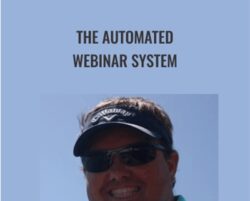 The Automated Webinar System – Kevin Hutto
₹48,970.00
The Automated Webinar System – Kevin Hutto
₹48,970.00
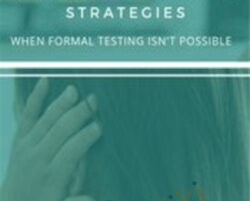 Sensory Integration & ‘Smart’ Treatment Strategies: When Formal Testing Isn’t Possible – Lorelei Woerner-Eisner & Susan B. Young
₹12,450.00
Sensory Integration & ‘Smart’ Treatment Strategies: When Formal Testing Isn’t Possible – Lorelei Woerner-Eisner & Susan B. Young
₹12,450.00
Sensory Integration & ‘Smart’ Treatment Strategies When Formal Testing Isn’t Possible – Susan B. Young
₹7,470.00

